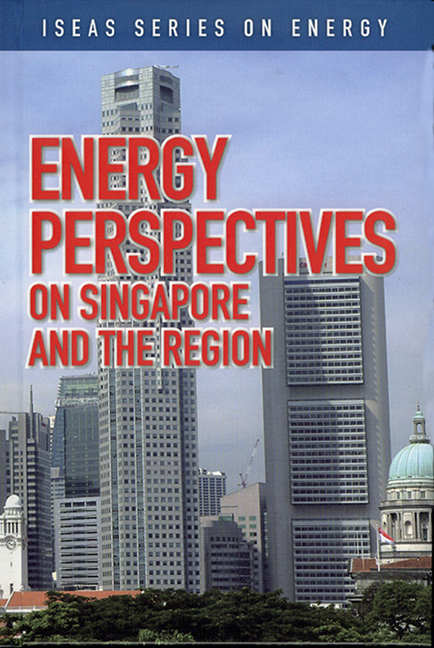Book contents
- Frontmatter
- Contents
- Foreword
- Preface
- The Contributors
- 1 Overview of Singapore's Energy Situation
- 2 Singapore's Changing Landscapes in Energy
- 3 Singapore's Role as a Key Oil Trading Centre in Asia
- 4 Large-Scale Solar PV Power Generation in Urban High-Rise Buildings in Singapore
- 5 The High-Carbon Story of Urban Development in Southeast Asia
- 6 Renewable Energy and the Environment: Technology and Economic Perspectives
- 7 Delivering Results in a Booming Rig Market
- 8 The Success Story of Rig Building in Singapore
- 9 The Singapore Oil Situation
- 10 Singapore Petroleum Company: Adding Value to the Singapore Oil Industry
- 11 Oil Storage: The Singapore Story
- REGIONAL and INTERNATIONAL
- Index
3 - Singapore's Role as a Key Oil Trading Centre in Asia
Published online by Cambridge University Press: 21 October 2015
- Frontmatter
- Contents
- Foreword
- Preface
- The Contributors
- 1 Overview of Singapore's Energy Situation
- 2 Singapore's Changing Landscapes in Energy
- 3 Singapore's Role as a Key Oil Trading Centre in Asia
- 4 Large-Scale Solar PV Power Generation in Urban High-Rise Buildings in Singapore
- 5 The High-Carbon Story of Urban Development in Southeast Asia
- 6 Renewable Energy and the Environment: Technology and Economic Perspectives
- 7 Delivering Results in a Booming Rig Market
- 8 The Success Story of Rig Building in Singapore
- 9 The Singapore Oil Situation
- 10 Singapore Petroleum Company: Adding Value to the Singapore Oil Industry
- 11 Oil Storage: The Singapore Story
- REGIONAL and INTERNATIONAL
- Index
Summary
INTRODUCTION
Singapore is currently the leading oil trading centre in Asia, just as New York, Houston and London are the major trading centre of the Americas and Europe. The rapid growth of the Asian economies and its thirst for oil has led some to question the role and validity of Singapore as Asia's leading oil trading centre.
Singapore has lost its role as Asia's leading refining centre as China, India, Malaysia, South Korea, Taiwan and Thailand, began to build up their refining capacity in the 1990s and early 2000s. Thus Singapore's role as a swing producer began to diminish. However, it is still a swing producer, meeting the supply bottlenecks that appear at times in the Asian oil industry.
Though Singapore may no longer be the refining centre of Asia, its status as Asia's oil trading centre has gone from strength to strength. What is meant by Singapore being Asia's oil trading centre is the use of the FOB Singapore petroleum product assessments and its trade reflecting Asia's oil demand and supply.
This chapter explains the continued role played by Singapore as Asia's leading oil trading centre. All tables and charts that appear in this chapter were created by the author from Singapore Trade Statistics, supplied by IE Singapore. The map that appears in this chapter was created by the author from information supplied by Platts.
WHAT IS A TRADING CENTRE?
A trading centre is defined in this chapter as a place in which its over-the-counter or futures market is used to settle oil contracts, either on a spot or term basis over a larger region. A trading centre need not necessarily be a crude oil or refined petroleum production centre, nor does it need to have a large domestic market or be an exporting country. For example, in Asia, Dubai crude, the benchmark for all Persian Gulf crude exports to Asia, is traded in Singapore, but is produced in the United Arab Emirates. Brent, produced in the North Sea, is traded largely in London but is also traded electronically from any part of the world.
- Type
- Chapter
- Information
- Energy Perspectives on Singapore and the Region , pp. 31 - 41Publisher: ISEAS–Yusof Ishak InstitutePrint publication year: 2007

